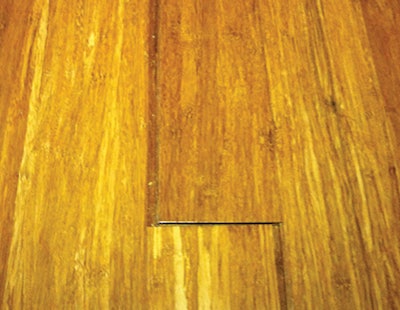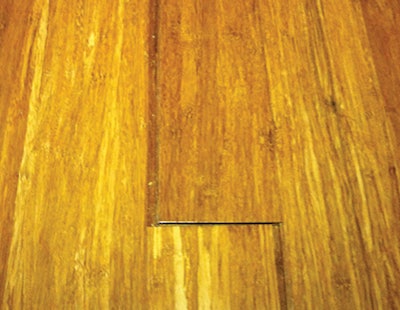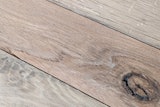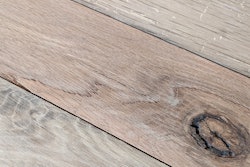

The Problem
Homeowners in New Jersey were complaining that the solid strand bamboo click flooring in their two-story home was separating in the winter and buckling in the summer.
The Procedure
The client purchased solid strand bamboo click flooring, and the GC hired a "professional flooring installer" who installed the flooring on the second floor of the home in the middle of summer. Soon after, the client noticed the flooring "rising" (buckling) and called the installer, who did not respond. By the middle of winter, the flooring planks were starting to separate. As a last resort, the homeowners called the manufacturer.
The Cause

Although I was confident this wasn't a warranted issue, the installer felt it was the flooring at fault, so I flew to the job site and met with the GC. I asked: Was the flooring acclimated properly? Did the installer take moisture readings? He had no documentation or recollection. I then asked if the flooring was attached anywhere, and he said, "No, it is a floating floor."
RELATED: Take Steps to Avoid Noise Complaints with Floating Floors
I checked the moisture content of the flooring, which was within the normal range for the season. Then I removed the baseboard and lifted the first row. I found small pin nails spaced every 11⁄2 feet along the first row and last rows. These small nails were holding back the floor from being able to experience its normal expansion and contraction.
How to Fix the Floor
While most contractors in this situation think the entire floor needs to be pulled up and re-installed to pull the planks back together, I was able to simply replace the nailed planks with new planks and used ratcheting straps to pull the flooring back together. This resolved the issues.
In the Future
While there are some legitimate questions about the dimensional stability or dimensional change coefficient (DCC) of solid strand bamboo, I feel we should address a core problem: The installation guidelines are not being followed. Whether regarding acclimation of the flooring, the use of T moldings, not using a wide enough baseboard, or the environmental conditions in the home, the majority of issues come back to the product not being installed or maintained correctly. When installing floating floors (especially solid strand click flooring), always remember these basics:
1. Acclimate the flooring to the manufacturer's guidelines. If you can't find any, call the manufacturer or refer to the NWFA guidelines.
2. All doorways, archways or areas where one room joins another room must be separated with T moldings.
3. Floating floors cannot be attached (whether fastened or heavily weighted) to any surface. Vertical obstructions will also restrict the flooring.
4. Floating floors move more around the perimeter of the room than attached flooring, so a larger expansion space is required, along with wider base or a base/shoe combination as needed.
5. The humidity needs to be constant prior to and after installation.
A "professional" installer installs to manufacturer-specific guidelines, and that is how installers cover their own installation warranties if there is ever an issue. I encourage all installers to attend any seminars and training courses they can to familiarize themselves with new and innovative products in our marketplace, including strand bamboo.

































